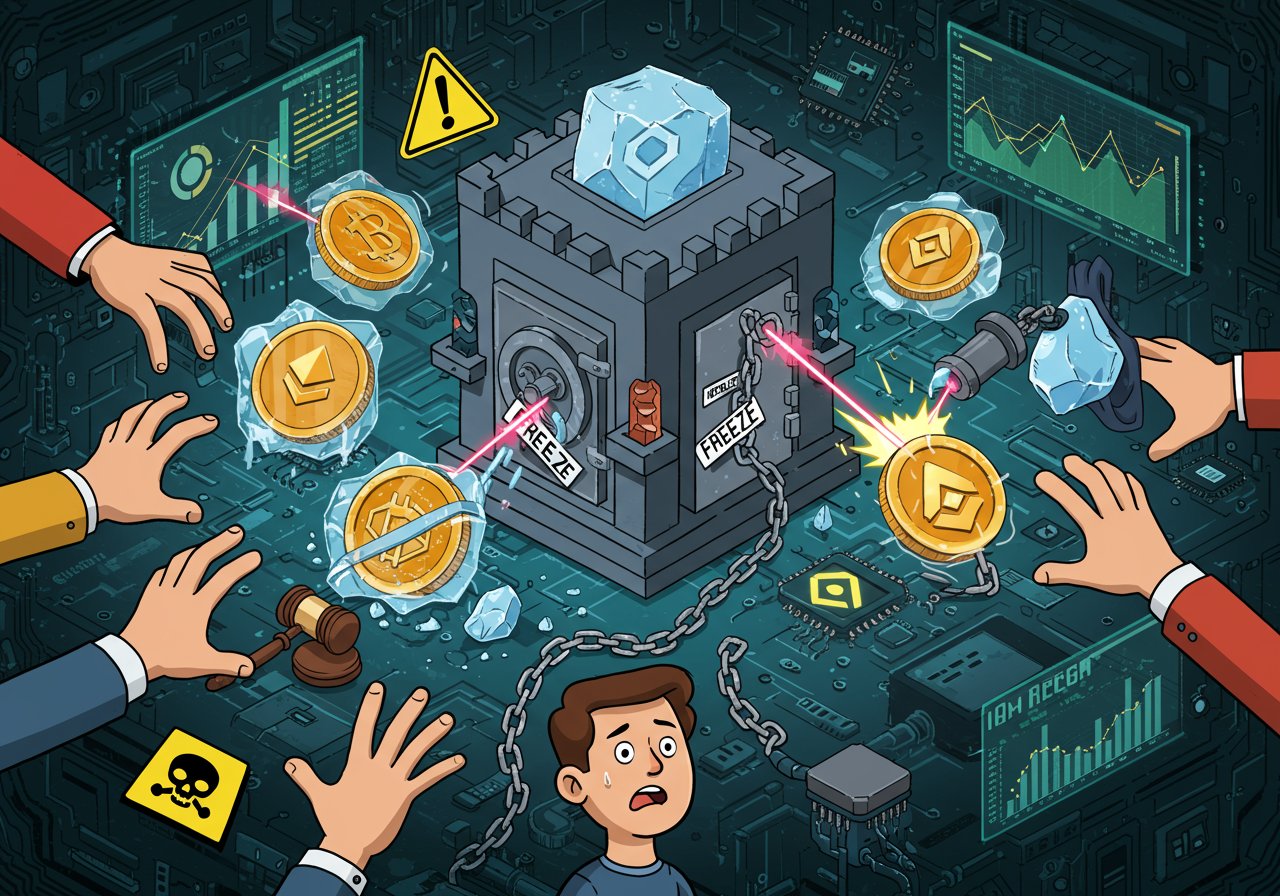
Bybit Unveils Fund-Freezing Vulnerabilities Across Multiple Blockchains
In a significant development for the crypto community, Bybit‘s Lazarus Security Lab has published a report highlighting a concerning trend: the ability of various blockchain networks to freeze or restrict user funds. The comprehensive analysis examined 166 networks, ultimately identifying 16 that possess this capability through various mechanisms. This discovery throws a spotlight on the delicate balance between security measures and the principles of decentralization that underpin the crypto ethos.

Three Primary Freezing Mechanisms Identified
The Bybit report details three main approaches employed by these blockchains to potentially freeze funds at the protocol level. These include hardcoded freezing functions, configuration file-based blacklists, and on-chain smart contract-based blacklists. The first, involving direct coding, raises immediate alarms, while the latter two present nuanced risks, potentially allowing for control by validators or specific entities. Ten of the identified blockchains, including Aptos, EOS, and Sui, utilize a config-based method. Other blockchains like BNB Chain, VeChain, Chiliz, Viction and XinFin’s XDC Network have freezing capabilities directly embedded in their code.
BNB Chain and Cosmos: Centralization Concerns Surface
Perhaps the most noteworthy aspect of the report is its focus on specific networks. BNB Chain, supported by Binance, is explicitly called out for its hardcoded freezing features, immediately raising questions about the degree of control exerted by the exchange. Furthermore, the Cosmos chain is identified as one of nineteen networks that could potentially introduce similar fund-freezing mechanisms with relatively minor protocol adjustments. This is possible through module accounts, which are controlled by module logic rather than private keys, offering avenues for transaction restrictions. While the report acknowledges these features are often implemented to combat theft or hacks, the implications for censorship and centralization are undeniable.

The Fine Line Between Security and Control
The findings of the Lazarus Security Lab directly contribute to the ongoing debate surrounding the true extent of decentralization within the crypto space. As more projects integrate compliance modules, emergency controls, and administrator-level privileges, the lines are becoming increasingly blurred. While such measures may enhance security, they also create potential vulnerabilities for censorship and control. The report comes on the heels of Bybit‘s own significant security incident, highlighting the urgent need for robust security, but also transparency, in the design and operation of these blockchains.
Implications for Investors and the Future of Decentralization
This report serves as a critical wake-up call for investors and developers alike. It underscores the importance of thorough due diligence when selecting a blockchain platform. Users should carefully scrutinize the potential for fund freezing and consider the implications of centralization on their investments. The long-term health and credibility of the crypto industry hinge on maintaining a balance between security, functionality, and the core principles of decentralization.


